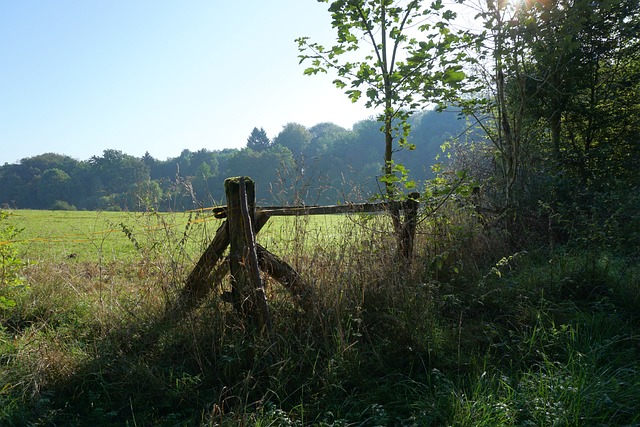Fences serve not only as structural elements but also as canvas for personal expression. Proper fence staining and sealing, however, are essential to maintain their aesthetic appeal and longevity. This comprehensive guide delves into the process, from understanding the benefits and types of stain to preparing your wooden fence and choosing the right products. By following our step-by-step instructions, you’ll ensure your fence not only looks its best but also receives the protective coating it needs against the elements.
- Understanding Fence Staining: Benefits and Types
- Preparing Your Wooden Fence for Staining and Sealing
- Choosing the Right Stain and Sealer for Optimal Protection
- Step-by-Step Guide to Effective Fence Staining and Sealing
Understanding Fence Staining: Benefits and Types
Fence staining is an excellent way to enhance the appearance and longevity of your wooden fence. It involves applying a protective finish, typically a pigmented stain or sealant, to the wood’s surface. This process offers multiple advantages. Firstly, it shields the fence from the elements, preventing rot, decay, and warping caused by sunlight, rain, and snow. Staining also provides a decorative element, allowing you to transform your outdoor space with various colors and finishes that complement your home’s aesthetic.
There are several types of fence staining options available. Water-based stains are popular for their low odor, quick drying time, and easy clean-up. They provide a more subtle color enhancement while still offering some protection. Semi-transparent and transparent stains offer varying levels of transparency, allowing the natural grain of the wood to show through while providing protection from the elements. For those seeking complete coverage and a solid color, opaque or solid stains are ideal, blocking out sunlight and providing maximum protection.
Preparing Your Wooden Fence for Staining and Sealing
Before applying stain or sealant, your wooden fence needs proper preparation to ensure optimal results and extended product life. Start by thoroughly cleaning the fence using a pressure washer or brush to remove dirt, grime, and any loose wood fibers. This initial step is crucial as it allows the stain or sealant to adhere better to the wood’s surface.
Once cleaned, inspect the fence for any signs of damage like rot, cracks, or peeling paint. Repair these issues using suitable materials before proceeding. Sanding the fence slightly can also help create a smoother surface and ensure even product distribution. Make sure the wood is dry completely to avoid any premature peeling or blistering of the stain or sealant.
Choosing the Right Stain and Sealer for Optimal Protection
When it comes to protecting your wooden fence, selecting the appropriate stain and sealer is a crucial step. The right combination will not only enhance the aesthetics but also provide long-lasting durability against the elements. Consider the specific needs of your fence; different stains offer various levels of protection against sunlight fading, moisture, and UV rays. For instance, semi-transparent stains provide minimal coverage while allowing the wood grain to shine, while solid color stains offer maximum protection by blocking out light and creating a more uniform appearance.
Sealers play an equally vital role in safeguarding your fence. They create a protective barrier against water, dirt, and other contaminants, preventing them from penetrating the wood. Choose a sealer that is suitable for exterior use and offers breathability to avoid trapping moisture within the wood, which can lead to rot or warping over time. Ensure compatibility between the stain and sealer by checking product labels and considering factors like climate and expected exposure to sunlight.
Step-by-Step Guide to Effective Fence Staining and Sealing
Step-by-Step Guide to Effective Fence Staining and Sealing
1. Preparation: Before staining or sealing, thoroughly clean your wooden fence to remove any dirt, debris, or mildew. Use a pressure washer or a brush with a mild detergent and water solution. Sand the fence slightly if it’s rough or has peeling paint to ensure better adhesion of the stain or sealer.
2. Choose the Right Product: Select a high-quality fence stain or sealer suitable for your wood type and desired finish. Stains enhance the wood’s natural color, while sealers protect against water, UV rays, and other elements. Follow the manufacturer’s instructions on coverage rates and application methods.
